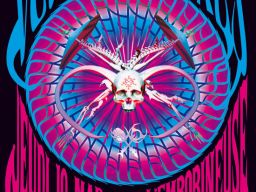Commencer une discussion
Annoncer un événement
Proposer une release
🍍 Ananas It !En savoir plus
Une discussion au hasard !
TV Incongrue
Zap! | Plein écran
Pinacothèque
Alternatives
Voir la galerie de la discussion
Vanilla 1.3.0 is a product of Lussumo. More Information: Documentation, Community Support.
Ce que vous allez trouver ici :
- Des discussions plus ou moins inspirées (car nous sommes bien sur un forum)
- Un calendrier d'évènements, pour vous aider à occuper vos soirées
- La liste exhaustive de toutes les sorties musicales annoncées sur ce forum depuis sa création
- Une radio automatique et surprenante
- Une pinacothèque collaborative
Cerise sur le gâteau, vous pouvez très facilement apporter votre contribution à tout ça. Pour ce faire, le mieux est encore de vous connecter ou de vous inscrire :)
Enfin, vous pouvez nous contacter directement à l'adresse email : contact (CHEZ) musiques-incongrues (POINT) net
-
PVUUUUUUUUUUUUUUUUUUUUUUUUUUUUUUUUUUUUUUUUUUUUUUUUUUUUUUUUUUUUU
https://streifenjunko.bandcamp.com/album/sval-torv
All music by Streifenjunko recorded 2011/2012 at Kolbotn kirke
Recorded, mixed and produced by Streifenjunko
Mastered by Helge Sten at Audio Virus LABVideo stills by Kjell Bjørgeengen
Sleeve design by Rutger ZuyderveltStreifenjunko is:
Eivind Lønning - trumpet
Espen Reinertsen - saxophone
crédits
paru le 24 août 2012Liner notes by Jim Denley:
(How can music that resists meaning, seemingly as pure as Sval Torv have implications beyond it's realm?)
In a radio program I made last year, sound theorist Caleb Kelly opinioned that we were in a period of recycling, that there wasn't much new music around. I was nervous about his assertion, and I've been mulling over it since. It strikes me that in the methodology employed to make music of ambition, (and surely 2 LPs of music for sax and trumpet is ambitious), the fact that we accept, without much thought, that it can be collectively authored, is a quiet, major revolution.
Most music histories of the first half of the twentieth century could look like a list of heroic individuals - Stravinsky, Russolo, Satie, Armstrong, Webern, Varese, Artaud, Cage, Parker, Feldman, Dylan, etc. But about 50 years ago bands start seriously complicating the way we think about composing - various John Coltrane bands, The Scratch Orchestra, the Art Ensemble of Chicago, the Beatles, AMM, Miles Davis bands, The Necks all produced music of ambition that can't be explained by a theory of individual creators.
Streifenjunko's Sval Torv continues a thread running through the best music of the last 50 years - in our first contact, we process the sound simply as material. Before we unravel the systems organizing the sounds through time, we're overwhelmed by the sensuality of the trumpetsax environment.
The breathtaking precision Espen and Eivind bring to their microscopic scan of shifting breath/harmonies, creates an engaging surface. But underlying the oscillating, clouding tones, pulsing vibratos and calibrated poppings there are appropriate systems and structures - this is carefully crafted music on many levels, and as the discs unfold one perceives that a theme is examined from different perspectives. So, after my initial engagement with surface, what tantalises me is not what the structures are, but ethics - how do they arrive at consensus about form? That question implies an adversarial model for making music collaboratively. (Revealingly 'collaborate' is what we do with the enemy). There is another way of looking at the issue.
There's magic around great bands, and with this recording, my fascination is not just about the music, as beautiful as that is, but the collective itself.
If I were to think of work, any sort of human endeavour, that examples collectivity and displays trust, I couldn't go beyond Sval Torv. Streifenjunko reveals in a most intimate and touching way – we hear exceptional respect between two men – we hear rich time spent developing together.
Their only notation is recording. They tell me - they handled the recording themselves, that they experimented with space and microphone placement - that they tried capturing this material a number of times, and each time, until now, were unsatisfied – that they don't talk much about the structures and systems - that playing and listening back is their compositional tool.
Created is a saxtrumpet traversing materiality - a trumpetsax never split, one part never isolated from the other - no counter to their points - a symbiotic relationship, more than the sum of the bodies. (And unlike much twenty first century music, flesh is not denied – no cyborgs here.) We experience the intertwining as a new body - a new body, and consequently a new mind.
Much of the morphology of the music, is then generated by shared consciousness. Their sounds are not tacked onto a predetermined framework - form emerges from process.
Perhaps Sval Torv is a throwback - an anachronistic luddite antidote to the rampant i-ism of our age. Or, I'd argue more positively, it's a harbinger of future endeavours - that Streifenjunko's utopia is the latest mutation in the remarkable evolution of collectively authored music, a model which is cogent for making the new dialects and creoles of today's and tomorrow's musics, (and not just musics).
Jim Denley, June 2012
1 to 1 of 1
